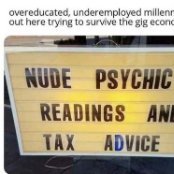State Railway of Thailand: Bidding for dual-tracking project soon
-
Recently Browsing 0 members
- No registered users viewing this page.
-
Topics
-
-
Popular Contributors
-
-
Latest posts...
-
82
UK State Pension Payments to a Thai Spouse
Currently have everything in Funds at the moment...maxed out the ISA stocks and shares without tipping over into the 40% bracket. Some of the funds have shown ridiculous returns recently.....one is 36% over 18 months. -
5
Accident British Expat Loses Both Legs in Bangkok Hit-and-Run Tragedy
Hope it works out for him as well as can be expected. In my 20 years there I always avoided riding on motorbikes (either as a driver or passenger), the roads are just too dangerous to be exposed, and on 2 wheels. (IMHO). -
99
Alert! Bangkok Bank new rule money seasoning
I'm not on a soap box. You stated; I stated it's not specifically about the amount of 800K. The notice from Bangkok Bank states; They are talking about the amount in the account prior to requesting the said letter, not any requirements imposed by Immigration. -
5
Accident British Expat Loses Both Legs in Bangkok Hit-and-Run Tragedy
So what about the lorry driver ? Did he flee in the lorry or abandon it ? Surely not difficult to track him either way and get him to pay or insurance to pay for the guys hospital bill. -
78
Report Thailand Tops World in Marital Infidelity Rates: 2024 Study
I don’t disagree with what you say. But having a legal marriage doesn’t stop one or both partners having sex with other parties and remaining married. So the legal marriage doesn’t preclude infidelity if the parties are so minded. Most extramarital sex remains secret from the other partner I would think -
84
USA Maxwell Clears Trump: DOJ Considers Releasing Interview
When is Trump gonna release the files?
-
-
Popular in The Pub







Recommended Posts
Create an account or sign in to comment
You need to be a member in order to leave a comment
Create an account
Sign up for a new account in our community. It's easy!
Register a new accountSign in
Already have an account? Sign in here.
Sign In Now